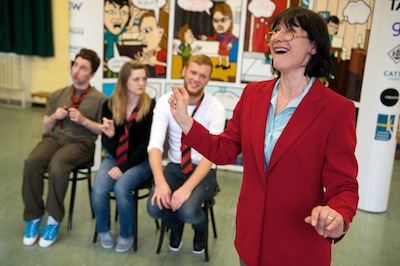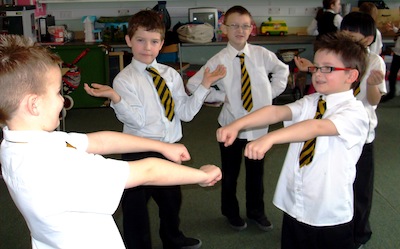About
The Co-Create project built on a previous YDance project, ‘Aim Higher’, fusing dance with technology, by providing live CPD support to teachers through Glow Meet to support their delivery of Higher Dance. YDance also delivered tutored sessions in each of the schools, facilitated a ‘Festival of Choreography’ on Glow, and developed a microsite to be hosted within Glow with a range of dance-based support resources for both teachers and pupils. This resource is now live on Glow for use by Higher Dance teachers and pupils across Scotland.
click here to watch 5 minute video
The project involved:
- YDance
- 5 PE teachers and their classes of Higher Dance pupils (45 in total) at 4 secondary schools
Partners:
- Graphical House design consultants
- Dumfries and Galloway; East Dunbartonshire; and Inverclyde local authorities
Purpose
The project aimed to achieve the following outcomes:
- Increased skills base for PE teachers to enable them to deliver more dance within the Curriculum for Excellence
- Increased number of teachers using the Glow site for distance learning
- Improved quality in the delivery of Higher Dance in schools
- Increased number of pupils presented for Higher Dance and improved pass rates
- Enabling schools to share experiences and best practice in Higher Dance delivery
- Increased dialogue between teachers and pupils across the 3 local authorities and other schools delivering Higher Dance.
- Improved relationships between pupils and teachers in geographically diverse schools who are providing Higher Dance.
Curriculum Areas
- Expressive Arts
- Higher Dance
- Biology
- English
- Health and Wellbeing
Levels and Stages
Senior pupils from S4 upwards
Types of Learning
Active learning – developing practical dance and choreography skills; performance and presentation skills; group work
Peer review and self assessment
Project Activity
YDance had worked with the teachers on a previous project, ‘Aim Higher’, where they trained PE teachers to deliver the Higher Dance course independently in schools not previously subscribed to the course. The Co-Create project built on ‘Aim Higher’, fusing dance with technology, to provide innovative live CPD support to teachers through Glow Meet to support their delivery of Higher Dance in a more ‘hands off’ way. CPD sessions covered African, Alternative Contemporary, Contemporary and Jazz dance styles. The project also:
- developed a microsite to host dance-based resource zones for pupils and teachers within the YDance Glow group;
- organised a Festival of Choreography – pupils from different schools shared their choreographies through Glow Meet;
- hosted online question and answer sessions through Glow Discussion Forum; and
- delivered 10 hours of YDance-led tuition within each of the schools, focusing on a dance style of the school’s choice.
Planning and development
YDance already had good existing relationships with the teachers involved in the Co-Create project, and a good understanding of their needs in terms of support for Higher Dance delivery – this helped facilitate the success of the project and allowed partners to adapt to challenges and difficulties along the way. One of the drivers for setting up the Co-Create project was feedback from the teachers on their need for further support to deliver the Higher Dance qualification.
Teachers were involved in shaping the Co-Create project and were consulted and involved in shaping project delivery throughout the project, through weekly Glow Meets and regular communication, resulting in a fairly flexible and collaborative approach to project delivery between YDance and the schools.
Pupils were not involved in initial project planning but they were consulted on an ongoing basis about which areas of dance interest them – this informed CPD Glow discussions between teachers and YDance, helping ensure the support teachers provided directly aligned with pupils’ needs and interests.
How was Glow used?
YDance used Glow to deliver 15 virtual CPD sessions for the four PE teachers, jointly, through the Glow Meet function. This allowed teachers to watch Y Dance tutors perform live dance techniques and discuss teaching approaches to different dance styles with other teachers and professional dance tutors. Glow was also used to broadcast a ‘Festival of Choreography’ which linked pupils and teachers from the four schools together to watch and learn from each other’s choreography.
Impacts
An independent evaluation was carried out by Blake Stevenson. Their research shows that the project had the following impacts:
New skills, knowledge and approaches for teachers
The project promoted the following key learning:
- curriculum requirements for Higher Dance;
- practice and theory around different dance styles;
- choreography and critical analysis skills.
Consultation shows that the project has had a fairly significant impact on the teachers and schools who have been involved. The virtual and online support from YDance has led to increased confidence and ability in PE teachers to be able to continue to plan and deliver the Higher Dance programme independently in their schools without recruiting specialist support. This has allowed the schools to offer greater opportunities to pupils in terms of a new subject choice while using and developing existing teaching resources. Co-Create has also supported some teachers to deliver aspects of the Higher Dance course they had not initially trained in.
Teachers and arts professionals feel that without the Co-Create CPD programme, the learning and development journey for the PE teachers would not have been as successful, and the progress achieved through ‘Aim Higher’ would have been harder to sustain; one teacher suggested without YDance’s support the school might have been forced to discontinue Higher Dance this year.
Two of the three teachers consulted through feel the project has resulted in greater creativity in their teaching practice. Teachers feel the project has supported a more active approach to learning, creating increased opportunities for pupils around peer-assessing, self-assessing, producing material, greater awareness of the performing arts and different dance styles and techniques, and increased skills in terms of choreography and group work. Teachers really welcomed the opportunities promoted through the project to share experiences and learning with other schools and with specialist dance tutors and found these valuable in enhancing their teaching practice.
“Regular Glow Meets with YDance leaders and other schools involved in delivering the Higher Dance course have enabled me to check teaching outcomes, techniques and stay on track throughout the year. Video examples and written checklists have also helped me to ensure I am delivering to the best of my ability.” (Teacher)
All three teachers felt the project would have a positive impact on future learning and teaching within their schools and hopefully allow them to continue delivering the Higher Dance qualification.
New skills and knowledge acquisition for pupils
Click this link for pupil feedback on the project: Why you should do Higher Dance
The project promoted the following opportunities for/types of learning:
- solo performances and presenting in front of teachers and peers, including those from other schools;
- working in groups to choreograph and perform routines;
- sharing experiences of Higher Dance to generate enthusiasm throughout the school;
- increased ability to recognise and address their own strengths and weaknesses and those of others;
- opportunity to be inspired by other pupils and professional dancers;
- taking responsibility for designing and managing their own choreography and performance, in groups and solo;
- active learning benefiting health and fitness; and
- some opportunity for inter-disciplinary working as pupils were asked to think about stimuli from other subject areas to inspire their choreography.
The project developed a range of new skills/knowledge for pupils, including:
- opportunity to study Higher Dance when previously not offered;
- greater awareness and understanding of their own physical abilities, and the physical abilities of others;
- theoretical and practical awareness of a range of different dance styles;
- choreography skills;
- peer review skills;
- learning about what their own bodies can do – biomechanics of the body;
- increased health and fitness.
Learning Outcomes
All the pupils consulted felt the project had increased their confidence and helped them communicate more effectively; two of the pupils felt the project had increased their team working skills. They all felt that the skills and knowledge they had learned through the project would benefit them when they left school, and would be useful to some extent to other subject areas. All had enjoyed being challenged and really enjoyed the opportunity to work in a different way from usual at school.
Teachers felt the project had supported them to realise the following capacity areas for pupils through teaching the Higher Dance course:
- Successful Learners – pupils demonstrated enthusiasm and motivation to achieve at Higher Dance;
- Confident Individuals – pupils gained increased confidence in their own dance abilities as well as achieving a sense of physical, mental and emotional wellbeing; and
- Effective Contributors – elements of the Higher Dance course, such as peer review, and the presenting to other schools facilitated by the project have supported pupils to become more confident and effective contributors.
New skills and knowledge for YDance
The Co-Create project has helped YDance develop a use and understanding of Glow, as well as developing their approach to offering support at ‘arms length’. YDance feel the project has had some impact on the organisation’s development in the following areas:
- their day to day practice;
- thinking about how YDance support and initiatives can support CfE; and
- their approaches to working with teachers and schools – including greater recognition of the timetabling and other issues/practicalities associated with working in schools and trying to encourage schools to work together.
Challenges and Learning
The initial intention was to deliver live choreography sessions through Glow to classes in each of the schools at a set time each week. This was not possible due to lack of internet connections in school gyms, and difficulties co-ordinating a time to suit the timetables of all schools. YDance responded by visiting in schools person to support choreography classes, and scheduling additional Glow Meet support sessions. While schools would have benefitted and enjoyed live sessions, this actually meant that the schools received more tailored support. Despite this adaptation to the original project plan, all partners felt the project had been a success and that everyone involved had benefitted from the experience.
“The Co-Create project was a very positive experience. We experienced technical hitches but I can still see the potential in the technology.” (Teacher)
Key Learning
In future, YDance said they will have better foresight in terms of logistical issues such as school timetabling and access to technology, including pupil-access to Glow accounts.
The project has also increased teachers’ confidence and ability to continue to deliver the Higher Dance programme independently in their schools, and has supported a more active approach to learning, creating increased opportunities for pupils around peer-assessing, self-assessing, producing material, greater awareness of the performing arts and different dance styles and techniques, and increased skills in terms of choreography and group work.
One of the key successes of YDance’s Co-Create project is that it enabled non-specialist dance teachers to competently deliver Higher Dance and maximised the potential of the virtual and online support available to them. This was, in part, successfully achieved due to the effectiveness of the partnership model established between YDance and the teachers involved – based on regular communication and flexibility as well as a commitment to support pupils to achieve to the best of their ability in Higher Dance.
Legacy
All teachers and arts professionals we consulted felt the project had created innovative and useful resources for ongoing and future use in the delivery of Higher Dance; and would result in continued use of new approaches to learning and teaching within the schools.
Funding
Co-Create was funded through a partnership between Learning and Teaching Scotland and Creative Scotland’s National Lottery Fund.
For more information contact:
Or visit:



























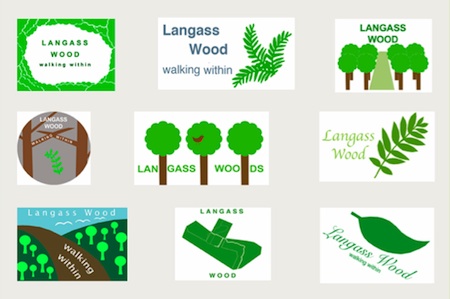




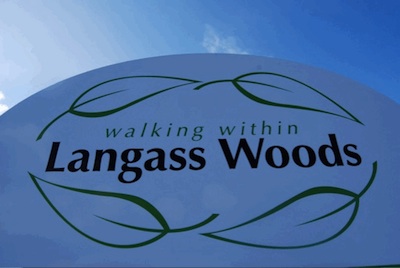







































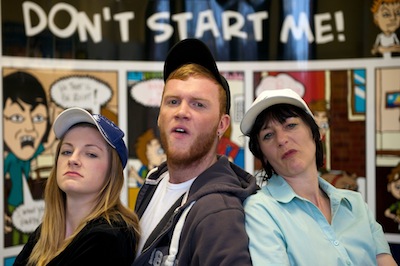 ABOUT
ABOUT
